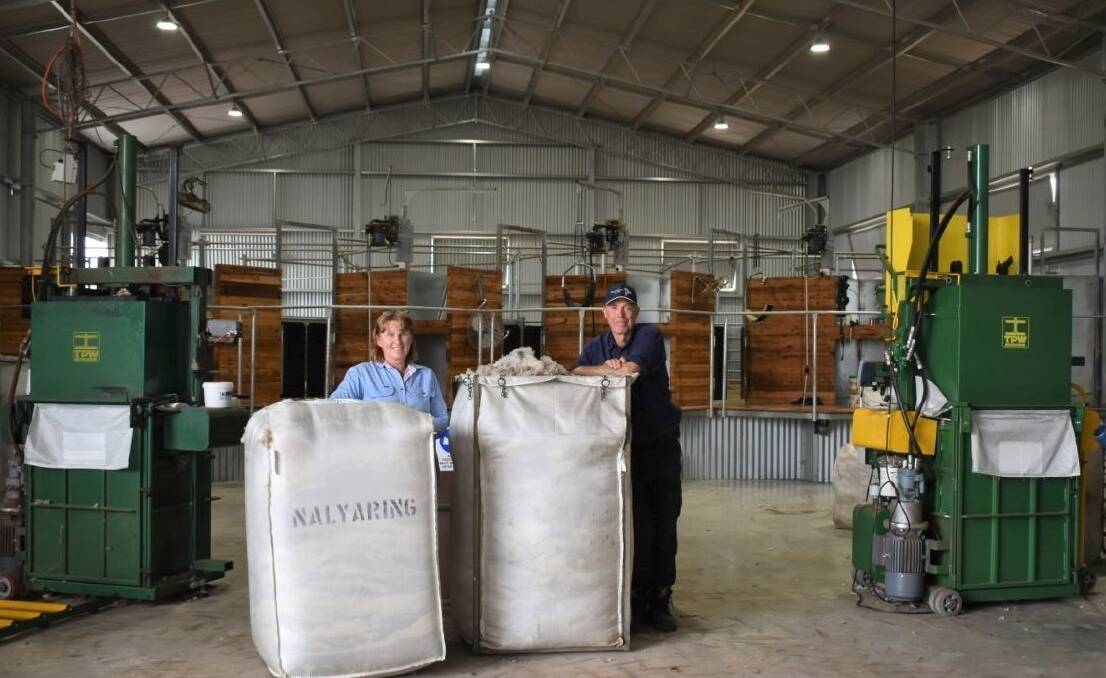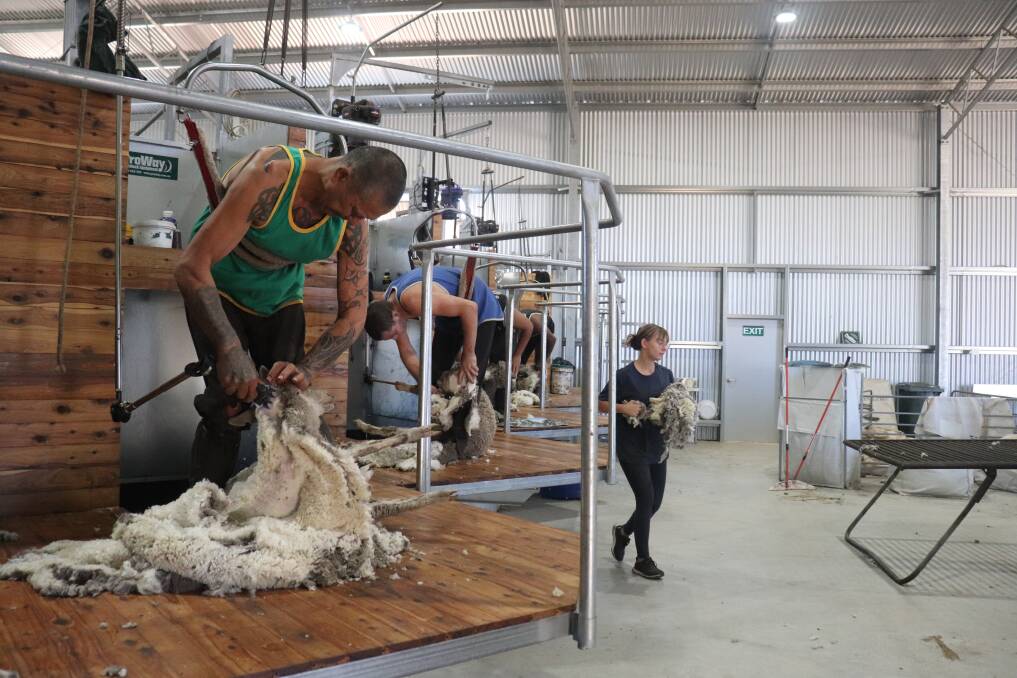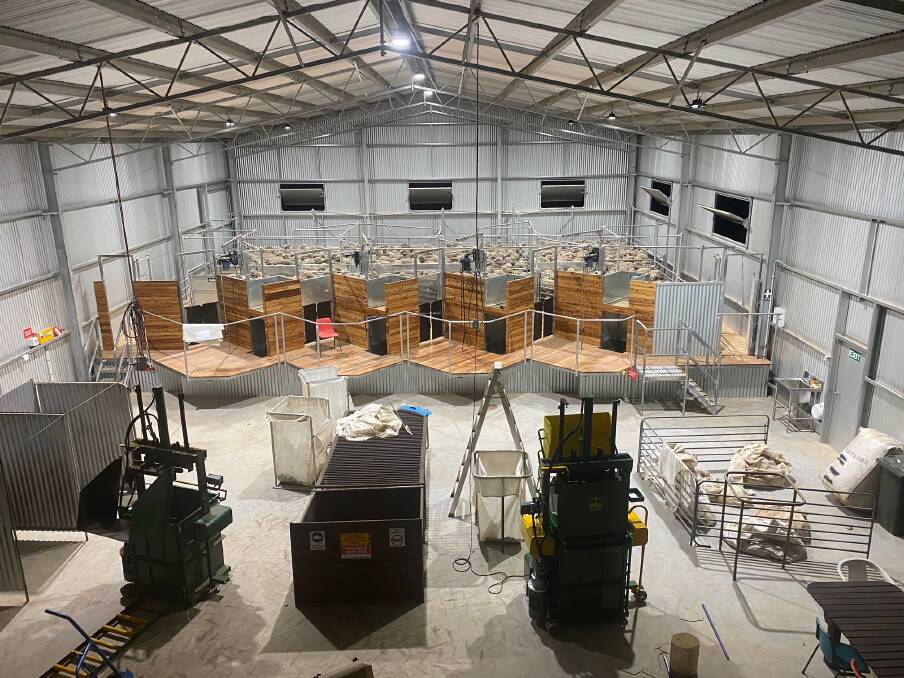
East Brookton sheep producers Bevan and Denise Walters long ago realised their timber-framed galvanised iron-clad, four-stand shearing shed needed replacing.
Subscribe now for unlimited access to all our agricultural news
across the nation
or signup to continue reading
Built after World War II, it had been modified and adapted several times.
It needed major improvements to meet Occupational Health and Safety (OHS) standards promoting a safer and less strenuous working environment for themselves, farm workers, shearers and shed staff.
Read more:
Looking at the empty old shed now, the Walters agreed it was a pretty tough working environment in there.

But the old shed still has its uses.
It provides extra undercover holding capacity and stores sheep equipment, supplies and health products, plus it has the loading out race.
It is being modified internally to provide a raceway link via a bridge into the new shed built beside it.
Mr Walters said he knew of a few new shearing sheds being built in WA and other older sheds being redesigned and modified.
He said while the focus on improved shearing facilities can come with a hefty cost, it indicates woolgrowers have confidence long term in their industry.

Australian Wool Innovation (AWI) has responded to both the shearer shortage and OHS changes in part by endorsing new designs for shearing sheds, including modular shearing stands and race delivery of sheep to shearers.
It encourages woolgrowers to invest in better facilities to help the industry retain more of the new and existing shearers and wool handlers for longer and with less risk of debilitating injury forcing them out of the industry early.
The Walters took a few years to choose the best site for their new shed.
It had to work with existing sheepyards, yard cover and laneways.

They chose well, with a bridge linking old and new sheds and a large ramp from existing yards into the new shed.
They "signed up" for the construction in June 2021.
AUSPAN erected the 30 metre long by 15m wide clear-span shed.
Compared to many dark, old low-roofed shearing sheds, the new shed is unusually light and airy, with a roofline high enough to allow a combine harvester to be driven through a large door at one end.

A harvester, or any other large farm equipment, can be stored in roughly one third of the shed not taken up by pens, shearing board, wool table and bins, two wool presses and kitchen/meals area.
The reinforced concrete floor is 15 centimetres thick so will not crack under the weight, enabling the shearing shed to double as a machinery shed.
The high roof also ensures heat which builds up immediately under the galvanised iron roof on any warm day, is always well above the heads of shearers standing half a metre above the floor on the shearing board.
Proway Livestock Equipment handled the shed fit-out.
A raised saw-tooth, four-stand board was installed, with individual tool and equipment storage at each stand and adequate room for shearers to hang personal items like cooling fans and towels.
Mountain Ash timber was used for grating in the catching and holding pens behind the shearing board, with a gentle slope in the catching pens so sheep naturally stand facing uphill, away from the swing-gates shearer access.

The catching pens are unusual in being offset at an angle behind the shearing stands and, while this requires shearers to drag sheep in an arc on the way back to their stand, it enables two catching pens to be filled at the same time from a holding pen behind.
Discharge chutes are angled so shearers do not have to turn to release a sheep.
Mr Walters estimates he can hold almost 300 sheep in the pens in the new shed if needed.
With the old shed next door and a large penned area under roof immediately behind that, he has the capacity to keep enough sheep dry for a full day's shearing during wet weather.
They had challenges to overcome with the build, the Walters admit, but the end result was worth it and better for everyone to work in.

Last month a team of four shearers, roustabouts, wool classer and presser/penner-up supplied by Pingelly shearing contractor Craig Hean started the annual shearing of the Walters family's 7000 sheep.
The new shed got the thumbs up from the shearing team when Farm Weekly visited.
The Walters are passionate about their sheep enterprise and the sheep industry.
They feel very fortunate with shearing underway, especially in what they describe as "an extremely challenging and stressful time for contractors with shearer and shed staff shortages".
They are also grateful they instigated this major infrastructure project a few years ago, before the current delays and cost increases impacting the building industry.

